Born in 1880, Ernst Ludwig Kirchner studied architecture and painting. Kirchner produced art that drew in the subject matter from studio life with artists, friends and models to the streets and nightclub life of the city to the summer trips and beaches.
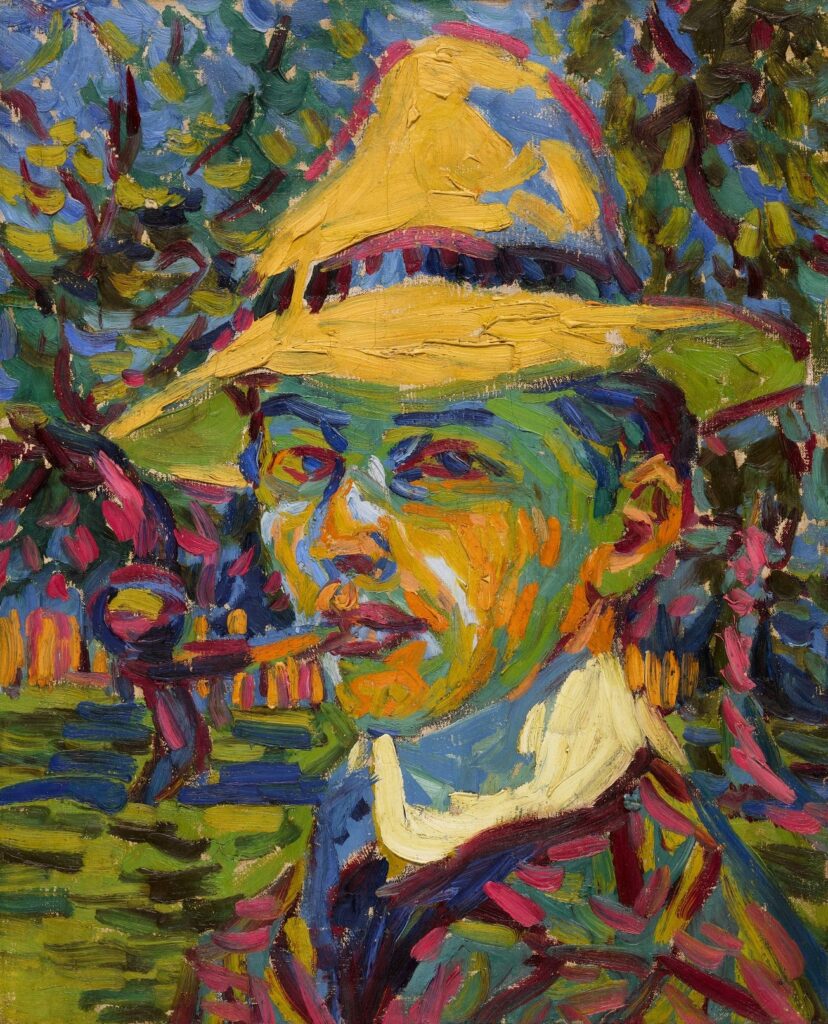
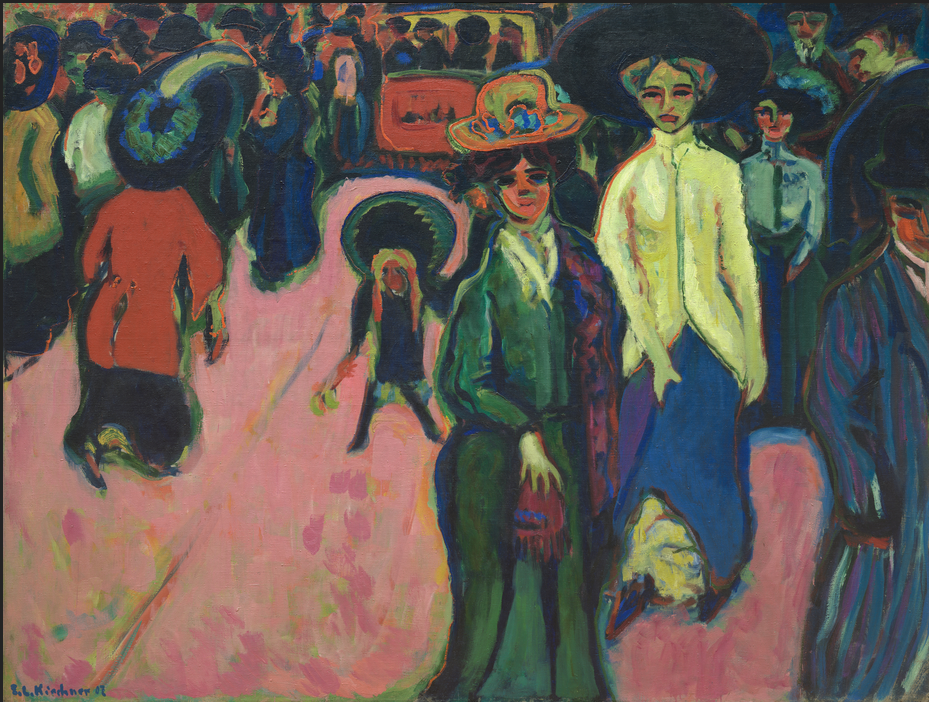
Ernst Ludwig Kirchner is a German painter and printmaker who was part of expressionist group of artists called ‘Die Brucke’ (‘The Bridge’). June 1905 Die Brucke group was established, also was recognised as the birth of expressionism. Four architecture students came together in Dresden to form the group; Ernist Ludwig Kirchner, Erich Heckel, Karl Schmidt-Rottluff and Fritz Bleyl. Without an prior artistic training they came together as a group and quickly became a huge art movement. Within this the artists produced a much more simplified or distorted form which complemented the unusually strong, unnatural colours that provoked an emotional response.
Expressionism meaning:
‘The artist or writer seeks to express the inner world of emotion rather than external reality.’
Die Brucke was German based – in Berlin, 1905-1913. The name indicates the influences on their work, with their art viewed as ‘the bridge’ between the past, present and future. The theme centered around social life – bourgeois lifestyle which means belonging to or characteristic of middle class which is perceived as having materialistic attitudes. We typically associate this with portraits and self portraits.
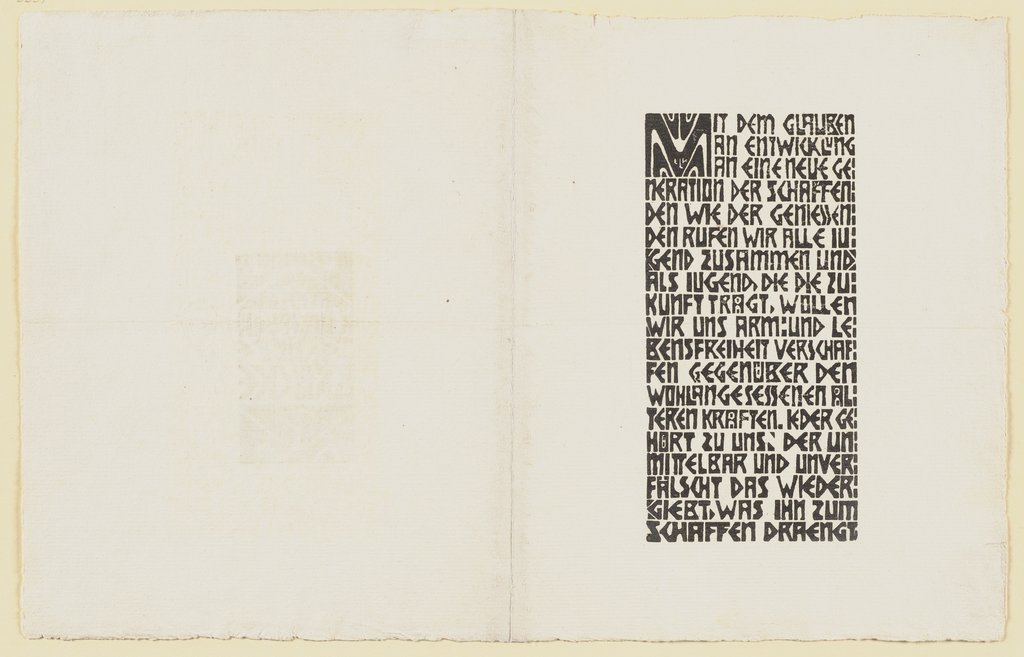
Above is the Groups first manifesto Tilted Program, Kirchner wrote ‘We call all young people together, and as young people, who carry the future in us, we want to wrest freedom for our actions and our lives from the older, comfortably established forces’. This explains how they were particularly drawn to the marginalised or lonely individuals on the fringes of urban society, with an aim of capturing tortured pain and anguish brought about by modern life. This idea of zoning into someone’s life, that surrounds them creates this type of new reality as we are shown an insight into someone’s life. Or otherwise expresses union as we are presented with a connection between two people.
The artists produced paintings, printmaking and sculpture, expressed through free brushwork of simple, heightened colour and jagged, elongated forms. Firstly influenced by post-impressionist painters such as Vincent Van Gogh to the vivid, colours and expressive techniques of French fauvists. However Die Brucke’s style was far more aggressive, meaningless (shown through life), and uncontrolling – this was expressed by the inharmonious colours, harsh, jagged outlines or deliberate crude or ugly forms. The movement began when European cities underwent periods of rapid development and urbanisation, resulting in the people feeling alienated and lost. Many of these artists were looking for an art that could express intense emotional responses which fitted into impressionist art collections. This is expressed through the distinct brushstrokes of colour which formulate the overall painting, creating this dramatic, expressive image.
Ultimately, Die Brucke artists intentions was to reveal the inner truth – which means revealing the inner soul of humans even if it was shocking, uncomfortable or confronting for the viewer. This particular theme was carried on throughout Kirchner’s work as we are presented with very emotional, figurative art work. The subjects are presented in ways that reveals a type of expressive emotion which is noticeable straight away as the upfront portraits of the subject reveals this dramatic emotion. Specifically the first three painting below, they give this sense of loneliness as each one gives us a new emotion. From a girl lying on a bed that looks tured and worn out, to a girl sat leaning away from her cat with empty and half drank bottles, to then a girl perched on a seat with someone standing in front. The frozen scene we are presented with, expresses a very realistic, unfiltered snapshot of someone’s life, as raw emotions are revealed which aren’t hidden away which perhaps creates this connection as we could relate. Bold pigmented, block colours are used which I think enhances the painting even further as it the scene is easily described to us, we don’t have to look for it. Otherwise shapes, patterns and lines are brought out through this which helps to clearly define each hidden shadow and feature in a simple form. I think this is a really interesting effect as not much is added to express detail and emotion, as we are presented this through very simple formations and compositions.
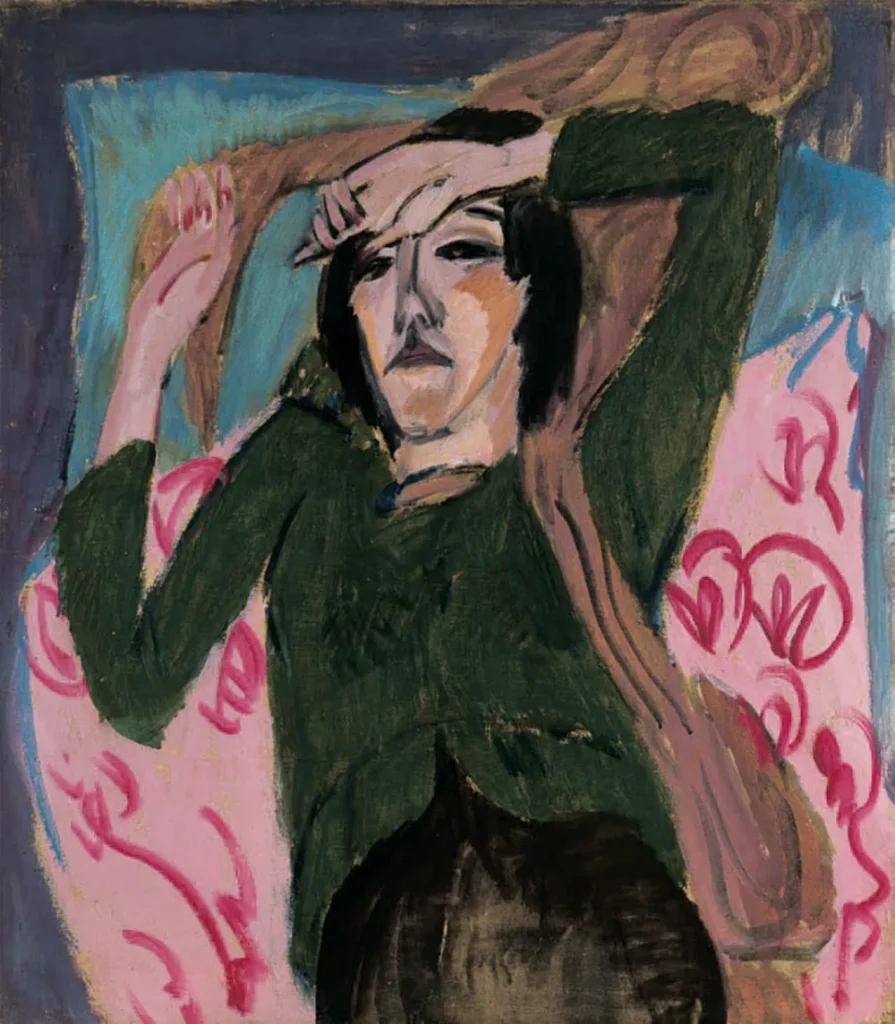
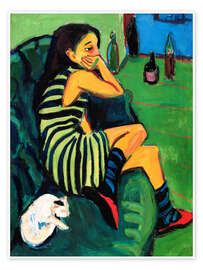
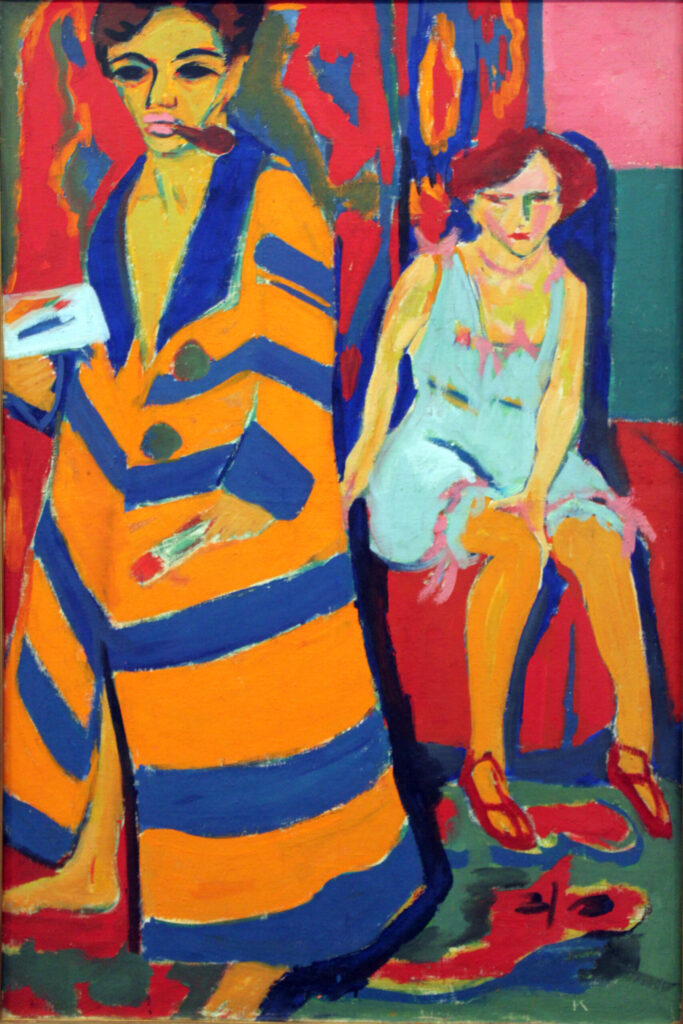

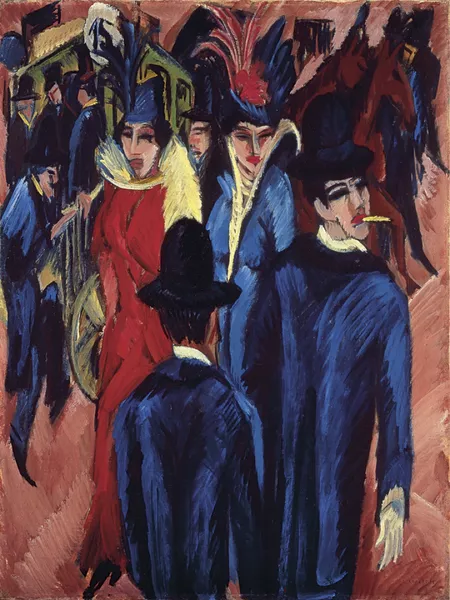
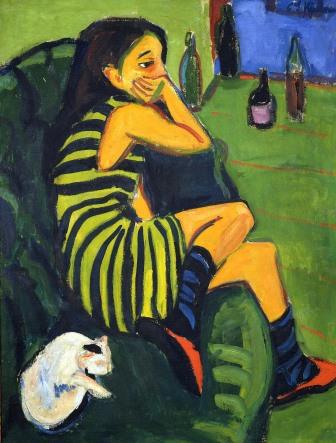
Artiste Marcella By Ernst Kirchner, made 1910
The photograph displays an upward diagonal line from the lower left to the upper right. From this angle we are brought to unusual perspectives that brings the observer to a position which is superior to the model. The high angle shot alters your perspective of the photo, as we are looking down onto the subject. This makes the subject appear smaller with the surroundings appearing more vast – meaning that what surrounds the subject is evidently more clear, shifting our view and attention onto the smaller objects that surrounds the subject, which communicates a relationship to the subject. The details within this widens our perspective as we wouldn’t typically notice this straight away as our attention is automatically drawn to the main subject of the person. However the composition is more softer to the eye, as there is a harmony of colour, marked by soft predominantly green colour fields, brought together by contrasting lines and patterns which give a contoured /broken up shadow effect.
The photograph is of a girl, lying on a sofa, with a cat to her lower right and open/ empty glass bottles to her upper left – where she is facing. She is displaying a worries or anxious emotion. This communicates something quite personal, as it is obvious she is going through something and the viewer is almost ‘invading’ her personal environment. I find this concept really interesting as we are presented with a view that is up close and personal, which reveals a slight insight to her life as we are shown a lot in her personal life. This style of environmental portraits is what I am going to further experiment with, as the the emotional concept formed by the person who is in their natural environment such as their bedroom creates unique and personal relationships and connections, otherwise uniting two things together forming a close relationship which could be one that we can relate with or one that we can’t.
Sources used:
https://www.posterlounge.ie/artists/ernst-ludwig-kirchner
